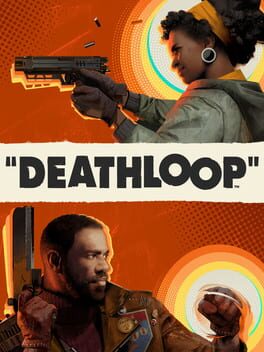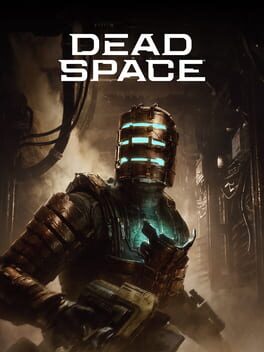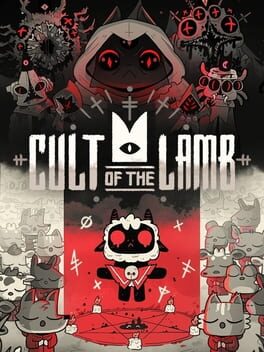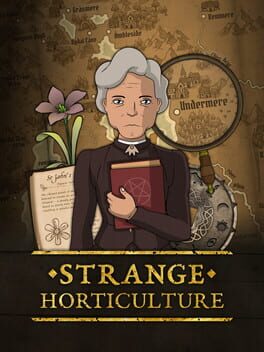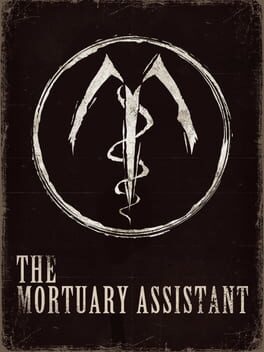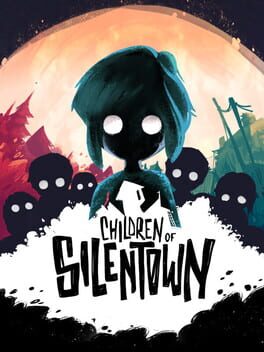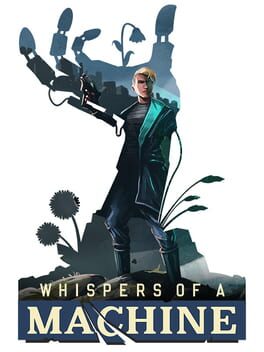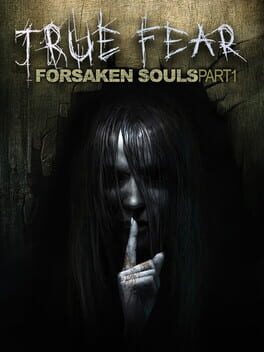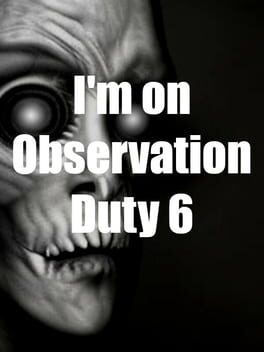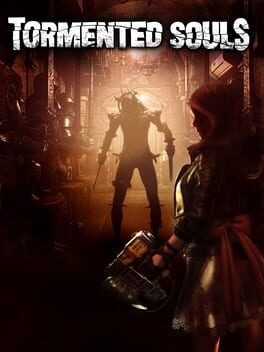ResidentRed
2021
Deathloop had me in the beginning with its quirky style and story, Colt’s investigation into Blackreef interesting for a time. Unfortunately the longer I played, the less invested I became. The four areas recycled the entire game, even with the differences between times of day, just became boring—this extends to the lack of variety in enemies as well. I often felt frustrated with the stealth too, detection being overly sensitive even when stationary in full cover.
But I liked Colt and Julianna, their banter silly and a little bit endearing. It’s just a shame the story fizzled out like it did. Like always I finish what I start, so it’s not like I didn’t give it a chance.
But I liked Colt and Julianna, their banter silly and a little bit endearing. It’s just a shame the story fizzled out like it did. Like always I finish what I start, so it’s not like I didn’t give it a chance.
2023
I went in with some nostalgia, the original having scared me back in the day. Dead Space has a lot of my interests compiled into one: cosmic horror, body horror, survival horror, you get the gist. It was a faithful remake, the most notable elements of story and level design mostly left unchanged yet some quality of life tweaks improved the experience. Isaac having a voice was also a good decision.
The combat was as meaty as ever and still relatively unique to this day with its dismemberment, especially the layers of flesh and bone that could be visibly stripped away. Another interesting aspect was the Intensity Director that sought to balance out the scares so that there was a steady level of downtime mixed with the enemy encounters. All in all, excellent and something I played a lot of.
The combat was as meaty as ever and still relatively unique to this day with its dismemberment, especially the layers of flesh and bone that could be visibly stripped away. Another interesting aspect was the Intensity Director that sought to balance out the scares so that there was a steady level of downtime mixed with the enemy encounters. All in all, excellent and something I played a lot of.
2022
Talk about addictive. Cult of the Lamb was weird and wonderful, all about maintaining a cult (through nice or nasty means) while trying to achieve godhood. It was part colony sim with building up a camp to suit the needs of followers, including things like crops, outhouses and a variety of buildings. It was even possible to pretty up the place with decorations, which I spent a ridiculous amount of time trying to do. Sure, keeping the cult alive could be tough, but at least it looked nice.
Then there was the roguelike grind, the aim to defeat the big rival bosses. It was mindless, with interesting abilities and weapons, some more powerful than others—it was up to RNG on what was dished out, some curse / weapon combos making it a breeze. The overall gameplay loop was excellent, with even more content added since release.
Then there was the roguelike grind, the aim to defeat the big rival bosses. It was mindless, with interesting abilities and weapons, some more powerful than others—it was up to RNG on what was dished out, some curse / weapon combos making it a breeze. The overall gameplay loop was excellent, with even more content added since release.
2020
Baldur’s Gate 3 spent years in early access, and I ignored it completely like I do with any other early access title. Then it released and blew away any and all expectations. There’s nothing like getting lost in a story full of colourful characters, I honestly felt transported back to DA: Origins with the sheer sense of wonder. Segmented into three acts, it had so many epic moments, and even with combing through the maps searching for encounters, I still missed content. The scope was just unbelievable, and I can't quite say how magical of an experience it was for me.
I went with a Druid, a self-sacrificing goody two shoes that made friends with everyone, so this leaves plenty of room for alternate runs with more morally questionable Tavs. In fact, the replayability is incredible when taking into account every choice over the course of the game—romance options, alliances, to be merciful or ruthless. The freedom was there to shape a hero or a villain.
I loved it, and I'll go so far to say it was the best I've played in years.
I went with a Druid, a self-sacrificing goody two shoes that made friends with everyone, so this leaves plenty of room for alternate runs with more morally questionable Tavs. In fact, the replayability is incredible when taking into account every choice over the course of the game—romance options, alliances, to be merciful or ruthless. The freedom was there to shape a hero or a villain.
I loved it, and I'll go so far to say it was the best I've played in years.
2022
Strange Horticulture was a serene experience, its gameplay revolving around identifying plants and solving mysteries that were embedded in the occult. It took place almost entirely behind the counter of a shop, with customers coming in with various requests, the idea to find the appropriate plant for their ailments. Any adventures outside the shop were text based, but that didn't detract from how engaging it was, quite the opposite. Within the first few minutes I knew exactly what I was going to get with the rest of the game: an atmospheric point and click indie about a strange town. Simple, yet effective.
There were even some decisions to make that involved a coven and a cult, both parties at odds with each other. It was well done in its subtle way, but I honestly had a blast just sorting my plants.
There were even some decisions to make that involved a coven and a cult, both parties at odds with each other. It was well done in its subtle way, but I honestly had a blast just sorting my plants.
The Mortuary Assistant was both a job simulator and a horror game. The embalming portion was well done with no other game of its kind going into such detail; do you know what a trocar is? You will after this. The gameplay loop consisted of trying to find the demon hiding in one of the bodies, certain procedures able to help discern which one to banish. During this there were haunt events, where spirits would pop up and mess around. As someone who’s not jump scared easily, some of these got me so consider me impressed.
It encouraged replayability with five endings in total, as well as randomised events that occurred on different shifts—the intention was to keep playing after the initial first shift. I played it to death (pun not intended), and had a great time.
It encouraged replayability with five endings in total, as well as randomised events that occurred on different shifts—the intention was to keep playing after the initial first shift. I played it to death (pun not intended), and had a great time.
Reminding me of a fairytale, Children of Silentown was a cute point and click puzzle game featuring an isolated town and their fear of the surrounding forest. Taking control of a rebellious child named Lucy, the story was a journey of curiosity and secrets. Progressing often required finding objects and combining them, or utilising the unique mechanic that was Lucy's musical talent to aid her in overcoming obstacles, even the ability to see the memories of villagers. These songs prompted minigame puzzles which I feel were overused and, if I'm honest, I really came to dislike one sort of puzzle in particular.
Still, it had much to enjoy with its artstyle, music and quirky characters. It also had some spookiness but nothing overtly scary.
Still, it had much to enjoy with its artstyle, music and quirky characters. It also had some spookiness but nothing overtly scary.
Set in a post-AI futuristic dystopia, Whispers of a Machine presented a murder mystery to solve as Vera, a cybernetically augmented special agent. Humanity versus AI is more relevant than ever these days, so I enjoyed the topics it brought up, even if some threads were never truly resolved. There were options on how to go about the investigation and approach situations, the three paths relating to being empathetic, analytical, or assertive, each having their own abilities to use during puzzles and dialogue.
I liked Vera as a character, the sort of no-nonsense woman that had a subtle sense of humour. Even though it differed from Kathy Rain (Clifftop Games' other title), I still found it to have its own strengths.
I liked Vera as a character, the sort of no-nonsense woman that had a subtle sense of humour. Even though it differed from Kathy Rain (Clifftop Games' other title), I still found it to have its own strengths.
True Fear: Forsaken Souls (Part 1) was a point and click HOG consisting of three acts, the aim to uncover a familial mystery. It had the atmospheric surroundings of abandoned, dilapidated houses and a good variety of puzzles—from hidden object scenes to doing the usual busywork of finding the appropriate items to make progress. Cutscenes were decent if a little hilarious due to the protagonist’s utter lack of emotion, the story itself not so great.
As far as the horror themes went, it attempted some cheesy jump scares now and again but was safe (couldn’t be killed) overall. I can't say it was anything other than relaxing for me, but I appreciated its mood.
As far as the horror themes went, it attempted some cheesy jump scares now and again but was safe (couldn’t be killed) overall. I can't say it was anything other than relaxing for me, but I appreciated its mood.
I’m on Observation Duty is a long running series of monitoring live surveillance footage and reporting anomalies—essentially spot the difference. This was my first time playing instead of watching a game like this, and I enjoyed it. While the changes in the environment could be subtle, there were also supernatural elements like ghosts and monsters, the latter able to kill if not caught in time. Too many anomalies at once could also end the run, the goal to make it to 6AM.
With two difficulty modes, normal was slower paced with no penalty for over-reporting, while hard mode included less obvious anomalies and a punishing lock-out for false reports. It was stressful at times, but there was something nice about zoning out and trying to keep up. I definitely see myself checking out more like this, or maybe even jumping into previous instalments.
With two difficulty modes, normal was slower paced with no penalty for over-reporting, while hard mode included less obvious anomalies and a punishing lock-out for false reports. It was stressful at times, but there was something nice about zoning out and trying to keep up. I definitely see myself checking out more like this, or maybe even jumping into previous instalments.
2021
Tormented Souls was a callback to the classics of survival horror, and one of the few that actually pulled it off. With a densely furnished environment complemented by a terrific use of lighting, it never failed to lure me further into its depths. Puzzles made up most of the game, mostly involving items and using them in specific ways. Ammo and saves were limited, but the difficulty was more than manageable with a sparse number of monsters, each of whom represented hospital patients and staff mutilated by experiments, from acid spitting crawlers to flayed wall monsters.
I had a great time, all told, but couldn’t quite get into the story, which in itself seemed to be an afterthought compared to everything else. The voice acting was especially painful.
I had a great time, all told, but couldn’t quite get into the story, which in itself seemed to be an afterthought compared to everything else. The voice acting was especially painful.
I don’t play a lot of metroidvania games, but Ender Lilies looked beautiful with its gothic fantasy style, and that along with its unique combat mechanic hooked me immediately. You see, the player character—a young girl—could only jump and evade, instead the spirits of defeated enemies were utilised as weapons. There were many to collect, offering a range of melee, ranged and magic skills that could be swapped out and tweaked. I had a good time finding out what build worked for me; I preferred ranged and magic.
It wasn’t without its frustrations as some of the maps were just horrendous to get through, and with it jumping on the souls-like train the difficulty spiked. The bosses, though, were enjoyable and fun to learn, and I consider that an important factor in games like this. Overall it was worth it, the atmosphere consistently moody and enhanced by the excellent music.
It wasn’t without its frustrations as some of the maps were just horrendous to get through, and with it jumping on the souls-like train the difficulty spiked. The bosses, though, were enjoyable and fun to learn, and I consider that an important factor in games like this. Overall it was worth it, the atmosphere consistently moody and enhanced by the excellent music.
2022
While Stray had a simple premise of playing as a cat, it did a lot with it. Going in blind, I had no idea of the setting, and was pleasantly surprised by the amount of love poured into it. There were the moments of silliness with pushing objects off edges, etc, but it was the times the map opened up, allowing for more exploration of the cybercity and its surrounding areas that I fell in love, and even more so with the unexpected Lovecraftian themes deep in the bowels of the sewers. It was such an epic adventure for a short game.
Of course, the story was limited due to being a cat, but the various NPCs did so much in fleshing out the world. I even cried at the end, and it's rare for me to get that emotional.
Of course, the story was limited due to being a cat, but the various NPCs did so much in fleshing out the world. I even cried at the end, and it's rare for me to get that emotional.
Vampire: The Masquerade – Swansong lacked polish at release and had a number of mechanics that I couldn’t quite find enjoyment in, but it had its moments. Divided into chapters that jumped between three protagonists, it involved a warehouse number of notes, codes and keycards. At times I got into playing the part of investigator, but when it came down to it, it didn’t feel like I was playing a vampire, and I think that’s a problem in a vampire game.
Its issues went down to its core foundation. Consumables and gear, for example, could be ignored completely, which begged the question why they were there to begin with. Converting tabletop systems into video game format can lead to a convoluted mess, and Swansong was certainly an example of that.
Its issues went down to its core foundation. Consumables and gear, for example, could be ignored completely, which begged the question why they were there to begin with. Converting tabletop systems into video game format can lead to a convoluted mess, and Swansong was certainly an example of that.
What Remains of Edith Finch is a beloved game, and after hearing it being raved about I had to check it out for myself. Essentially a walking simulator, it explored the tragic deaths of a family in a collection of stories, setting up a mystery of a supposed curse. It was creative in that it changed up how each individual story was told, going from different mini games and visual styles. Most included children, so it was impossible not to feel disturbed.
I liked it but didn’t love it. For such a story driven experience it lacked closure. I get its intention was to leave it up for interpretation—was there an overall supernatural element or just plain paranoia and child neglect?—but in the end I was left feeling unsatisfied. It all came down to taste, and unfortunately I just wasn't blown away. Still, for sheer imagination alone it impressed, the house especially.
I liked it but didn’t love it. For such a story driven experience it lacked closure. I get its intention was to leave it up for interpretation—was there an overall supernatural element or just plain paranoia and child neglect?—but in the end I was left feeling unsatisfied. It all came down to taste, and unfortunately I just wasn't blown away. Still, for sheer imagination alone it impressed, the house especially.
